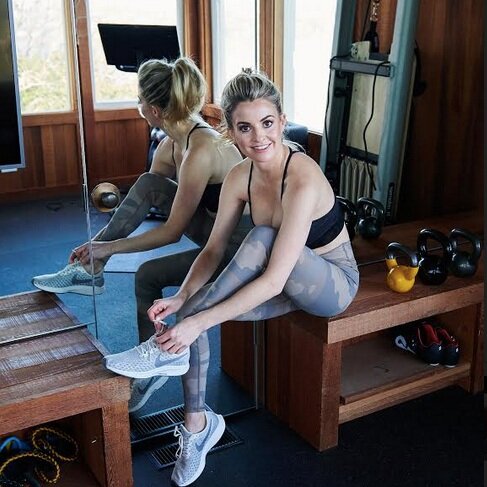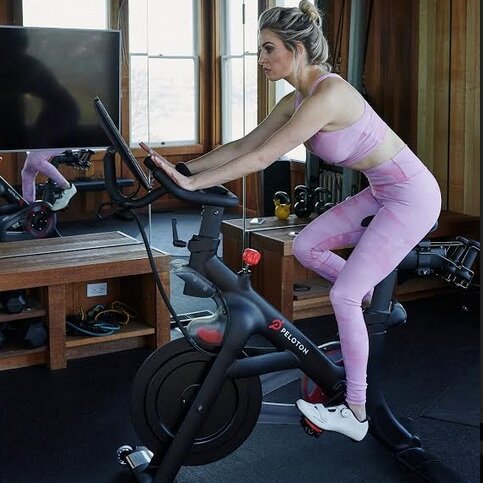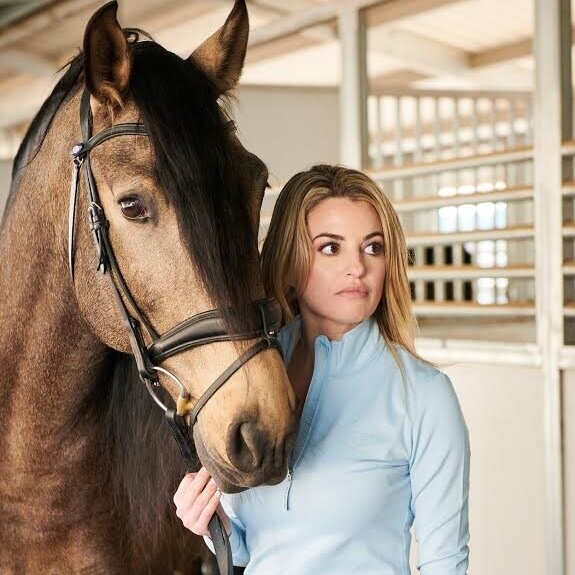Coping With Covid As An Equestrian
COVID has taken it’s toll on everyone. The pandemic has challenged the world to find a new normal, and although there is light at the end of the tunnel with vaccines being distributed, it looks like the world that we knew a year ago is not coming back anytime soon. For athletes we have had to find new strategies to continue to advance in our training, and the majority of us have suffered from setbacks due to the effects and restrictions of COVID.
The Challenges COVID Has Had On Equestrians
Training with Iguazu at our facility in California
As equestrians, we are lucky as for the most part our sport is considered an outdoor activity where social distancing is a lot easier to achieve than with other sports. However, like all other sports, equestrians have had to deal with cancelled competitions because they are considered to be events that bring people together, and limitations to access outside training like clinics which are a huge contributor to advancing our training. Equestrians are also suffering from the lack of community to bounce ideas off of and receive feedback. I keep my horse at a small training facility where we wear masks when we are not on horseback and are encouraged to not engage with other riders and to keep social distance as soon as we dismount. Equestrians, like all athletes, are also having a harder time keeping fit with gym and fitness facility closures that our so helpful with our riding positions which is essential to our training. These restrictions have led to my personal setbacks in working through the dressage levels, but I have found coping skills to be able to keep progressing during the pandemic (maybe not at the rate that I would like to, but we are all doing the best we can).
How to progress in your training during the pandemic:
Virtual Lessons and Recording Training Sessions
At my training facility, my trainer invested in auto-follow cameras to provide us with the ability to receive instruction from outside trainers and record our rides. Through this technology, cameras such as the brands Pixio and Pixem (created by the company Move ‘N See which markets to the equestrian demographic), can be setup in a ring and track you as you ride at home while wearing a headset/earbuds to hear the instructor. These cameras offer riders and trainers the opportunity to have virtual lessons and receive instruction from trainers that we would normally receive from clinics that have been canceled due to travel restrictions and social distancing. The auto-follow camera technology is also great for providing instructors who are financially dependent upon giving clinics a revenue stream teaching lessons from their own home without having to travel. A win/win for both riders and trainers during COVID, and so effective that this might become the new normal after the pandemic instead of having to trailer your horse to clinics or bring in outside training. This camera technology also provides equestrians with the opportunity to video themselves in the ring which is an excellent tool to critique our own riding and use video to market ourselves.
Joining an Online Equine Community
The new social app Clubhouse
Because our social interaction with other people has become so limited with the need to social distance, it is important during this time to fill the void of community. As an equestrian I get so much out of bouncing ideas off other riders, and talking to other people about their training and issues they have/are experiencing. Because COVID has prevented us from being able to organically see and interact with other riders, I have found that I am able to fill this void from an online community. I recently joined the social app Clubhouse, which is a brand new social media networking platform. Clubhouse is an audio drop in social network, that provides a place for authentic conversations from people around the world that share topics of interest. I have joined a group called “Equestrian Connect” that currently has 1.5k members, and will take 30+ minutes a day to join a conversation related to horses that might be going on, or join the Equestrian Connect chatroom and have a conversation with other horse lovers about pretty much anything equine related. Clubhouse has been a great tool to give me a diverse, international community of like minded individuals to run ideas by and hear about other equestrians training/businesses and provide my own feedback. Clubhouse is currently in their beta phase and you need to be invited by a member to join. I currently have some invites, so if you are interested contact me under my Contact Page, and if I still have some invites I would be happy to invite you to be a member!
Staying Fit At Home
One of my ways of coping with the pandemic has been to create an at home gym. I realized that for my mental health and also to stay fit as an equestrian, I needed to create a space in my home to be able to workout. With gyms being closed because of COVID, creating a home gym has kept me active and in shape for riding. I have found equipment that is at home friendly and does not take up too much space. I purchased the Tonal for strength training, the Peloton bike for cardio, and the Peak Pilates Fit Reformer for pilates.
Training with the Tonal
The Tonal provides weight training workouts by using electromagnetism to create resistance and mounts to your wall in a remarkably small footprint for a personalized full body workout through their virtual classes.
Training with the Peloton Bike
The Peloton bike is an effective and fun solution for getting my cardio in. The Peloton virtual classes are great for motivation and really get your heart pumping with interval training.
Training with the Peak Pilates Fit Reformer
The Peak Pilates Fit Reformer is awesome for at home use because it incorporates space-saving vertical stacking. Now I can do Pilates from home which is so important for my core strength and riding posture.
If you do not have room to create your own home gym, and/or don’t want to spend the money buying exercise equipment, there are great options you can find online that require no money or equipment.
Pamela Reif’s Workout Videos
I am personally a huge fan of Pamela Reif who offers great fitness videos on her YouTube channel. One of my favorites is her 10 minute ab workout videos which are great for keeping a strong core for riding.
Using This Time To Fine Tune Your Training
As an equestrian each show season we are trying to move up another level. With the cancelled shows last season and the uncertainty of the next show season, COVID provides an opportunity to deal with the issues we tend to sometimes overlook because we are so focused on getting to the next level. As a dressage rider with a young horse, COVID has given me the time to work on my horse’s self carriage, obedience, and my riding position. These things are essential for me and my horse to be successful at the upper levels, and can sometimes be overlooked as priorities in training when riding in the lower levels because we are so focused on learning the new movements our horse needs to know for the upcoming show season. The pandemic is an opportunity to deal with training issues and work on the basics that are essential for having a horse and rider that will receive higher scores at the lower levels and have the proper foundation at the more advanced levels of the sport.





























